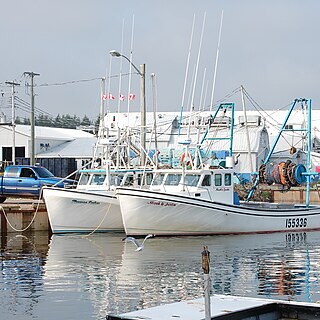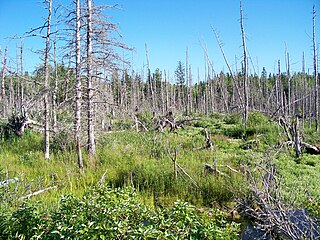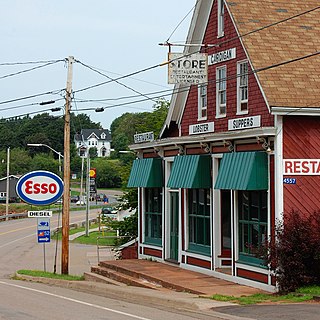
Tignish is a Canadian town located in Prince County, Prince Edward Island.

North Rustico is a Canadian town located in Queens County, Prince Edward Island.
Alberton is a Canadian town located in Prince County, Prince Edward Island. It is situated in the western part of the county in the township of Lot 5.

Kensington is a Canadian town located in Prince County, Prince Edward Island. It is 15 km (9.3 mi) northeast of the city of Summerside. In 2021, its population was 1,812 and is seeing rapid growth thanks in part to a recently opened business park.

Georgetown is a community located within the municipality of Three Rivers in Kings County, Prince Edward Island, Canada. It is the Capital of Kings County. Previously incorporated as a town, it amalgamated with the town of Montague, the rural municipalities of Brudenell, Cardigan, Lorne Valley, Lower Montague, and Valleyfield, and portions of three adjacent unincorporated areas in 2018.
O'Leary is a village located in Prince County, Prince Edward Island. Its population in the 2021 Canadian Census was 876 people. O'Leary was incorporated as a village in 1951.

Miscouche is a municipality that holds community status in Prince Edward Island, Canada. It is located in Prince County.

Murray Harbour is a community that holds rural municipality status in Prince Edward Island, Canada. It is located in southeastern Kings County.
Miminegash is a rural municipality in Prince Edward Island, Canada. It is located 8 miles (13 km) northwest of Alberton and 11 miles (18 km) southwest of Tignish. It is part of a small area in Lot 3 known as either the St. Louis, Palmer Road, or Miminegash area. This area is often associated with Tignish due to the shared Acadian roots between these areas.

Morell is a rural municipality in Prince Edward Island, Canada. It is located in Kings County east of Bristol.
Mount Stewart is a rural municipality in Prince Edward Island, Canada. It is located in the northeastern part of Queens County, at the head of the once-navigable portion of the Hillsborough River at the point where the river begins to narrow significantly. Mount Stewart had a population of 226 at the time of the 2021 Census.
Murray River is a rural municipality in Prince Edward Island, Canada. It is located in Kings County.
Wellington is a rural municipality in Prince Edward Island, Canada. It is located in Prince County, and extends as Wellington Centre onto Route 2 from Richmond through to St. Nicholas.
Abram-Village is a rural municipality in Prince County, Prince Edward Island, Canada.

Cardigan was a municipality that held community status in Prince Edward Island, Canada. It was a fishing community in eastern Kings County.
Crapaud is a rural municipality in Prince Edward Island, Canada. It is located north of Victoria in the township of Lot 29.
Linkletter is a rural municipality in Prince Edward Island, Canada. It is located in Prince County.
The Municipality of Malpeque Bay is a municipality that holds community status in Prince Edward Island, Canada. It is located in Prince County and Queens County.
St. Peters Bay is a municipality that holds community status in Prince Edward Island, Canada. It was incorporated in 1953. St. Peters Bay is well known for its annual Blueberry Festival and Parade, which draws in tourists and locals alike.
Souris West is a municipality that holds community status in Prince Edward Island, Canada. It was incorporated in 1972. Contains the Locality of Souris West and part of the Locality of Lower Rollo Bay.






















